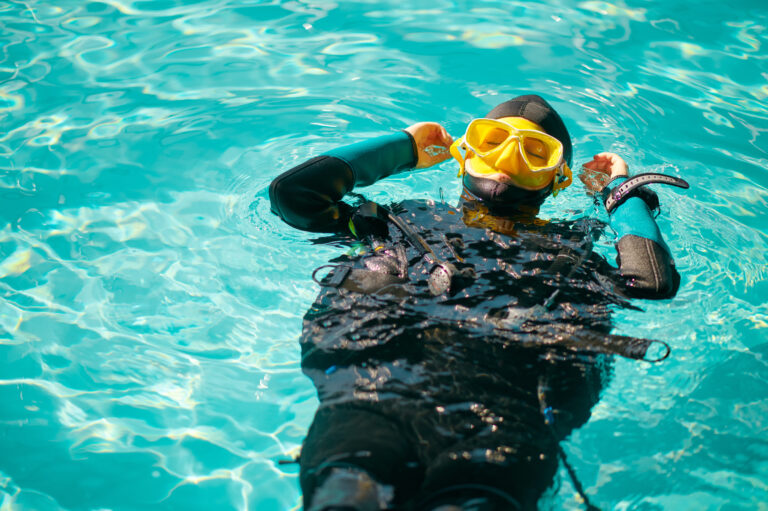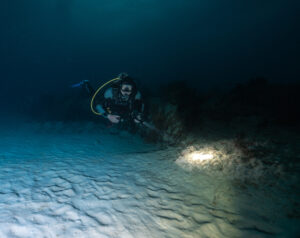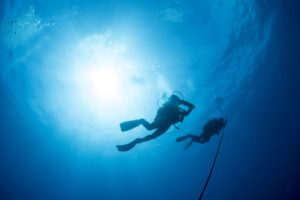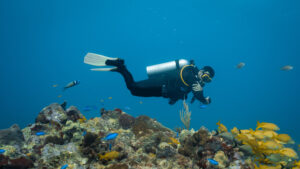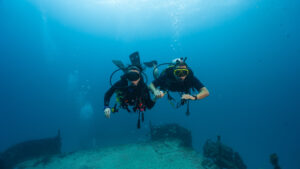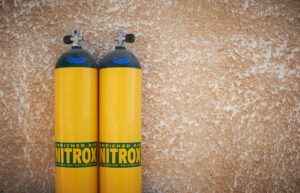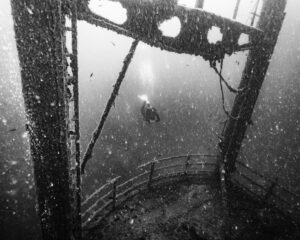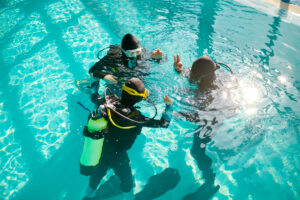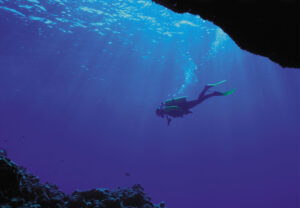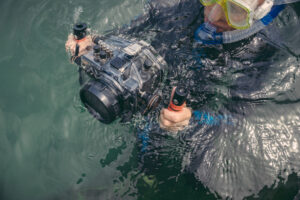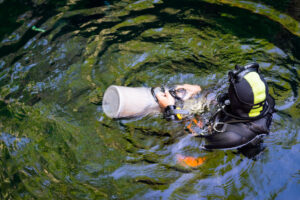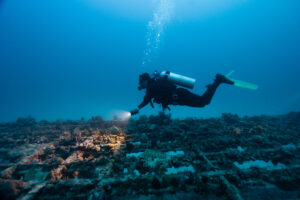What is it to “Call a Dive” When Scuba Diving?
In scuba diving, the term “call a dive” refers to the decision to end a dive and return to the surface. This decision is a critical aspect of dive safety and can be made by the diver, their buddy, or the dive leader. The rationale for calling a dive can vary from diver safety concerns to environmental changes, but it always centers on ensuring the well-being of all involved. By understanding when and why to call a dive, divers can prevent potentially dangerous situations and avoid unnecessary risks.
Calling a dive is not viewed as a failure; rather, it is a demonstration of sound judgment and a commitment to safety. The decision to end a dive early may arise from a variety of factors, including issues with equipment, personal discomfort, or changing underwater conditions. In all instances, communication is key, as it ensures that the entire dive team is informed and able to ascend safely together.
Factors That Can Lead to Calling a Dive
Diver Safety
The foremost reason to call a dive is to protect the safety of the diver. Scuba diving presents unique physical challenges, and issues such as equipment malfunctions, exhaustion, or symptoms of decompression sickness may necessitate an immediate return to the surface. In these situations, it is crucial to prioritize health over the continuation of the dive.
Equipment malfunctions are a common reason for calling a dive. If a diver’s regulator malfunctions or their buoyancy compensator device (BC) fails, these equipment issues can compromise safety. Similarly, if a diver experiences difficulty equalizing pressure in their ears or sinuses, it may become too painful to continue the dive. Divers should also be vigilant about any signs of decompression sickness (DCS), such as joint pain, dizziness, or numbness, as these symptoms require immediate action to prevent further complications.
Physical discomfort is another valid reason for calling a dive. A diver might experience cold, fatigue, or muscle cramps, all of which can diminish their ability to focus and safely navigate underwater. If discomfort persists or worsens, it is prudent to call the dive before the situation escalates into a more serious issue.
Environmental Factors
Changes in the environment can also prompt a diver to call a dive. Weather conditions, underwater visibility, and currents can shift unexpectedly, posing potential hazards to the dive team. For instance, if a sudden storm develops, it may become dangerous to remain submerged, as turbulent waters can reduce visibility and make navigation difficult.
Strong underwater currents are another concern that can force a dive to end prematurely. Currents can pull divers off course, increase the effort required to swim, and even separate dive buddies. If currents are too strong, a diver may struggle to maintain control, making it necessary to call the dive and surface safely. Reduced visibility, often caused by silt or plankton in the water, can also compromise a diver’s ability to see their surroundings and their buddy, leading to disorientation and increasing the likelihood of accidents.
It is important for divers to remain aware of changing environmental conditions during the dive. Even if the dive begins with optimal weather and calm waters, it is essential to continually monitor these factors and be prepared to call the dive if conditions worsen.
Air Supply
Monitoring air consumption is a vital aspect of dive safety. If a diver runs low on air, it becomes imperative to end the dive and begin the ascent. Divers rely on air from their tanks to breathe, and when the air supply drops below a safe threshold, continuing the dive can lead to an emergency situation.
An unexpected loss of air supply, such as from a malfunctioning tank or regulator, can also occur. In such cases, calling the dive immediately is crucial to avoid panic or running out of air entirely. Divers should always check their air gauge regularly during a dive, and if they notice that their air supply is dwindling faster than anticipated, they should communicate this to their buddy or dive leader and begin the ascent.
Time Constraints
Another reason for calling a dive is reaching time limits based on no-decompression limits (NDL) and dive planning. The NDL is the maximum time a diver can stay at a particular depth without needing to perform decompression stops during ascent. If a diver exceeds this limit, they increase their risk of developing decompression sickness, which can be life-threatening if not managed properly.
To avoid this, divers must be aware of their NDLs and begin their ascent before these limits are reached. It is essential to call a dive when the planned time underwater has expired, regardless of how much air remains in the tank or how favorable the conditions appear to be.
Buddy or Group Separation
Scuba diving is often conducted in buddy pairs or groups, and maintaining close proximity to one’s buddy is crucial for safety. If a diver becomes separated from their buddy or dive group, it is typically a reason to call the dive. Separation can increase the risk of accidents, as a diver may not have immediate assistance if an issue arises, such as running low on air or encountering equipment problems.
In the event of separation, divers should try to reunite with their buddy by searching the immediate area for no more than a minute. If the buddy cannot be located within this time, the diver should call the dive and ascend slowly to the surface. This ensures that both divers can regroup and return safely to the boat or shore.
The Importance of Clear Communication
Clear communication is a cornerstone of safe scuba diving. Underwater, divers cannot rely on verbal communication, so they must use non-verbal methods such as hand signals, dive slates, or electronic devices that allow messaging through dive computers. When a dive is called, communicating this decision effectively to all dive team members is essential.
The universally recognized hand signal for calling a dive is the thumb-up gesture, which indicates the need to ascend. This simple, clear signal must be visible to the diver’s buddy or the dive leader. Once the decision to end the dive has been communicated, the team can coordinate their ascent to ensure everyone surfaces together safely.
Dive computers with communication capabilities can further enhance safety by allowing divers to send and receive messages underwater. While these devices are not always necessary, they can be particularly useful in deeper dives or situations where more complex information needs to be conveyed.
Ensuring that all members of the dive team understand the signals and procedures for calling a dive is a critical part of pre-dive planning. During the dive briefing, divers should review hand signals and communication protocols to avoid confusion or misunderstandings during the dive. This helps create a safer dive environment and ensures that every diver feels confident in their ability to communicate effectively.
Practical Steps to Take When a Dive is Called
1. Signal to Your Buddy or Dive Leader
The first step when calling a dive is to signal the decision to ascend. This is done using the thumb-up gesture to indicate the need to surface. It is important that the signal is clear and that the diver ensures their buddy or dive leader acknowledges the signal before proceeding with the ascent. Effective communication at this stage prevents confusion and ensures that all members of the dive team are aware of the plan.
2. Ascend Slowly and Safely
Once the decision to call the dive has been made, divers should ascend slowly and follow the appropriate safety protocols. The recommended ascent rate is no faster than 30 feet (9 meters) per minute to allow for the safe off-gassing of nitrogen from the body. Ascending too quickly can increase the risk of decompression sickness, so it is important to maintain control throughout the ascent.
Divers should also perform a safety stop at 15 feet (4.5 meters) for 3 to 5 minutes. This pause allows additional nitrogen to escape the body, reducing the risk of decompression sickness. Even if the dive has been called due to an issue like low air supply or equipment malfunction, the safety stop should not be skipped unless the situation is critical.
3. Monitor Your Buddy and Surroundings
During the ascent, divers should keep a close eye on their buddy and remain aware of their surroundings. This is especially important in situations where there are additional hazards, such as boat traffic, marine life, or potential entanglement risks. If assistance is needed, divers should signal to their buddy immediately to ensure that both parties reach the surface safely.
Maintaining situational awareness is key to avoiding accidents during the ascent. By monitoring their surroundings, divers can make informed decisions and avoid potential hazards, ensuring a safe return to the surface.
4. Inflate Your Buoyancy Compensator Upon Surfacing
Upon reaching the surface, divers should inflate their buoyancy compensator (BC) to establish positive buoyancy. This makes it easier to float and breathe while waiting for the dive boat or shore support to assist them. Inflating the BC also helps prevent fatigue and ensures that the diver remains stable at the surface.
5. Signal to the Dive Boat or Shore Support
If a dive boat or shore support is present, the diver should signal to them that they have surfaced and may need assistance. This can be done using a surface marker buoy (SMB) or by waving an arm. In situations where a diver has surfaced far from the dive boat, an SMB can be particularly useful for indicating their location and helping the crew retrieve them.
Training and Preparation
Proper training is crucial for divers to make informed decisions about when to call a dive. Scuba diving certification programs, such as those offered by PADI, NAUI, or SSI, teach divers the skills needed to assess their surroundings, monitor their physical condition, and recognize when it is time to end a dive.
In addition to basic training, ongoing education and practice are essential for building confidence and competence underwater. Specialty courses, such as rescue diver training, provide divers with the tools to manage emergency situations, including when and how to call a dive. These courses also emphasize the importance of diving within one’s limits and being prepared for unexpected challenges.
Importance of Dive Planning
A well-planned dive reduces the likelihood of needing to call a dive unexpectedly. Dive planning involves assessing the dive site, including factors such as weather conditions, underwater currents, and potential hazards. It also includes planning for equipment needs and establishing a gas management plan to ensure air supply is sufficient for the entire dive.
Contingency planning is a key aspect of dive preparation. Divers should consider potential emergency scenarios, such as equipment failure or separation from the dive group, and have a plan in place for how to handle these situations. By addressing these factors before the dive begins, divers can reduce the risk of needing to call the dive prematurely.
Post-Dive Debriefing and Learning
After a dive is called, it is important to conduct a debriefing with the dive team. This allows divers to discuss the reasons for calling the dive and review any challenges that arose during the dive. By sharing experiences and insights, divers can improve their future diving practices and reinforce the importance of safety.
Debriefing also provides an opportunity to review communication protocols and discuss how well the dive team worked together. Identifying areas for improvement in communication can help prevent misunderstandings in future dives and ensure that all divers are equipped to make sound decisions underwater.
Key Takeaways
The ability to call a dive is a vital skill for scuba divers, ensuring safety and well-being throughout the dive. Proper training, thorough dive planning, and effective communication are all essential elements that contribute to making the right decision to end a dive when necessary. By prioritizing safety and fostering open communication, divers can enjoy their underwater experiences with the confidence that they are prepared for any situation.

